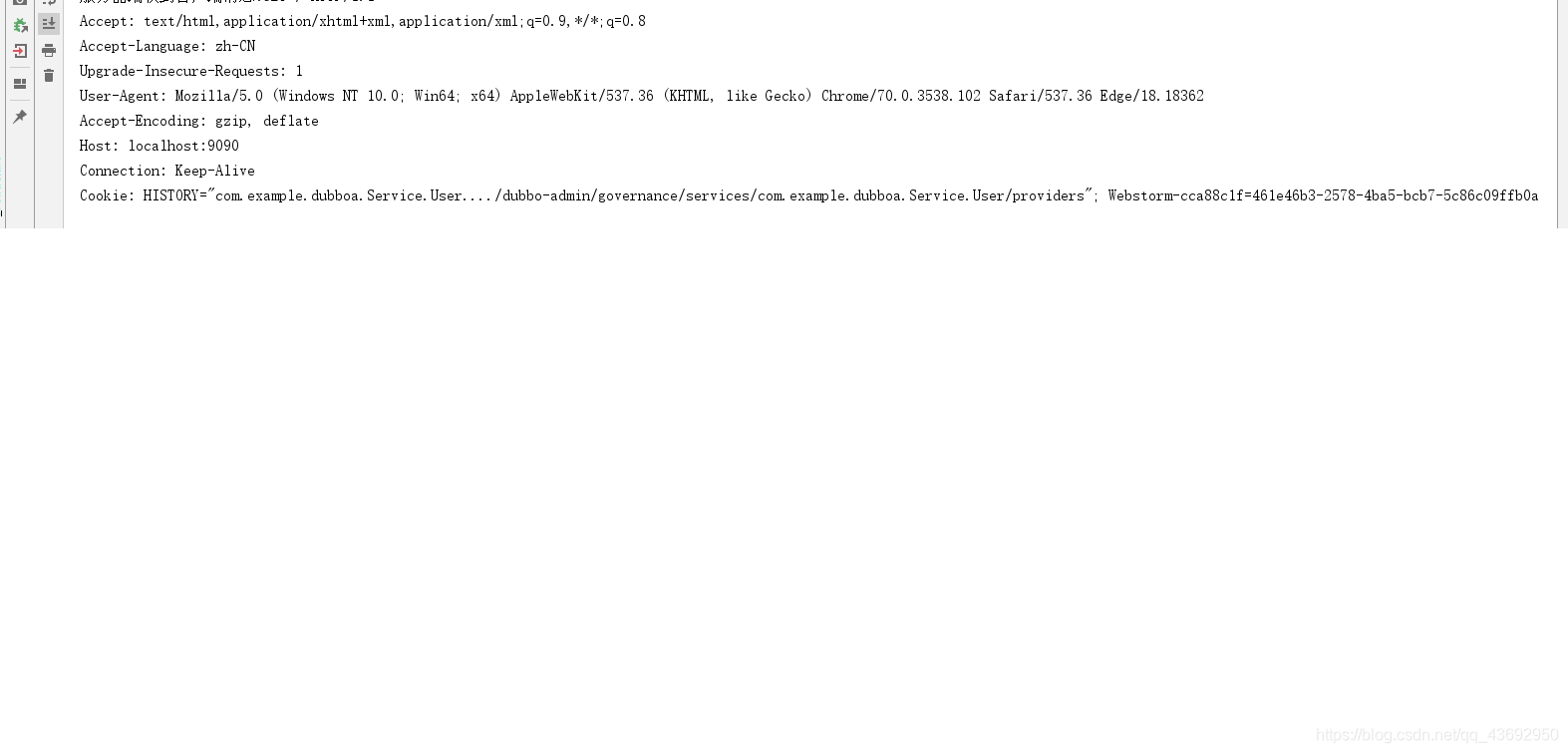使用Netty3.X编写异步非阻塞Socket tcp通信
【摘要】
使用Netty3.X编写异步非阻塞Socket tcp通信
Netty应用场景
分布式开源框架中dubbo、Zookeeper,RocketMQ底层rpc通讯使用就是netty。游戏开发中,底层使用n...
使用Netty3.X编写异步非阻塞Socket tcp通信
Netty应用场景
- 分布式开源框架中dubbo、Zookeeper,RocketMQ底层rpc通讯使用就是netty。
- 游戏开发中,底层使用netty通讯。
netty的优点
- NIO的类库和API繁杂,使用麻烦,你需要熟练掌握Selector、ServerSocketChannel、SocketChannel、ByteBuffer等;
- 需要具备其它的额外技能做铺垫,例如熟悉Java多线程编程,因为NIO编程涉及到Reactor模式,你必须对多线程和网路编程非常熟悉,才能编写出高质量的NIO程序;
- 可靠性能力补齐,工作量和难度都非常大。例如客户端面临断连重连、网络闪断、半包读写、失败缓存、网络拥塞和异常码流的处理等等,NIO编程的特点是功能开发相对容易,但是可靠性能力补齐工作量和难度都非常大;
- JDK NIO的BUG,例如臭名昭著的epoll bug,它会导致Selector空轮询,最终导致CPU 100%。官方声称在JDK1.6版本的update18修复了该问题,但是直到JDK1.7版本该问题仍旧存在,只不过该bug发生概率降低了一些而已,它并没有被根本解决。该BUG以及与该BUG相关的问题单如下:
集成
pom
<!-- https://mvnrepository.com/artifact/io.netty/netty -->
<dependency>
<groupId>io.netty</groupId>
<artifactId>netty</artifactId>
<version>3.3.0.Final</version>
</dependency>
- 1
- 2
- 3
- 4
- 5
- 6
如果在android上集成,请去网上下载 netty.jar,引入到环境中。注意版本问题,本篇是根据3.x来写的。
实现服务端
1、回调
首先建立回调类,客户端发来的信息,以及其他一些日志信息,都会反馈到这个Handler类中,下面开启服务时,会指向这个类。
class ServerHandler extends SimpleChannelHandler {
/**
* 通道关闭的时候触发
*/
@Override
public void channelClosed(ChannelHandlerContext ctx, ChannelStateEvent e) throws Exception {
System.out.println("channelClosed");
}
/**
* 必须是连接已经建立,关闭通道的时候才会触发.
*/
@Override
public void channelDisconnected(ChannelHandlerContext ctx, ChannelStateEvent e) throws Exception {
super.channelDisconnected(ctx, e);
System.out.println("channelDisconnected");
}
/**
* 捕获异常
*/
@Override
public void exceptionCaught(ChannelHandlerContext ctx, ExceptionEvent e) throws Exception {
super.exceptionCaught(ctx, e);
System.out.println("exceptionCaught");
}
/**
* 接受消息
*/
public void messageReceived(ChannelHandlerContext ctx, MessageEvent e) throws Exception {
super.messageReceived(ctx, e);
// System.out.println("messageReceived");
System.out.println("服务器端收到客户端消息:"+e.getMessage());
//回复内容
ctx.getChannel().write("好的"); //反馈给客户端
}
}
- 1
- 2
- 3
- 4
- 5
- 6
- 7
- 8
- 9
- 10
- 11
- 12
- 13
- 14
- 15
- 16
- 17
- 18
- 19
- 20
- 21
- 22
- 23
- 24
- 25
- 26
- 27
- 28
- 29
- 30
- 31
- 32
- 33
- 34
- 35
- 36
- 37
- 38
- 39
- 40
- 41
2、开启服务
// netty 服务器端
public class NettyServer {
public static void main(String[] args) {
// 创建服务类对象
ServerBootstrap serverBootstrap = new ServerBootstrap();
// 创建两个线程池 分别为监听监听端口 ,nio监听
ExecutorService boos = Executors.newCachedThreadPool();
ExecutorService worker = Executors.newCachedThreadPool();
// 设置工程 并把两个线程池加入中
serverBootstrap.setFactory(new NioServerSocketChannelFactory(boos, worker));
// 设置管道工厂
serverBootstrap.setPipelineFactory(new ChannelPipelineFactory() {
public ChannelPipeline getPipeline() throws Exception {
ChannelPipeline pipeline = Channels.pipeline();
//将数据转换为string类型.
pipeline.addLast("decoder", new StringDecoder());
pipeline.addLast("encoder", new StringEncoder());
pipeline.addLast("serverHandler", new ServerHandler());//此处指定上面的回调类
return pipeline;
}
});
// 绑定端口号
serverBootstrap.bind(new InetSocketAddress(9090));
System.out.println("netty server启动....");
}
}
- 1
- 2
- 3
- 4
- 5
- 6
- 7
- 8
- 9
- 10
- 11
- 12
- 13
- 14
- 15
- 16
- 17
- 18
- 19
- 20
- 21
- 22
- 23
- 24
- 25
- 26
- 27
- 28
- 29
此时在浏览器输入localhost:9090,看控制台打印信息,如果出现下面日志,说明服务端开启成功并可用。此时可在服务下面再做其耗时他操作,并通过浏览器发送请求,会发现请求可其他操作互不影响不会被服务阻塞掉。

客户端的实现
和服务端实现类似,只不过将其中一些对象换成客户端的对象。
回调
class ClientHandler extends SimpleChannelHandler {
/**
* 通道关闭的时候触发
*/
@Override
public void channelClosed(ChannelHandlerContext ctx, ChannelStateEvent e) throws Exception {
System.out.println("channelClosed");
}
/**
* 必须是连接已经建立,关闭通道的时候才会触发.
*/
@Override
public void channelDisconnected(ChannelHandlerContext ctx, ChannelStateEvent e) throws Exception {
super.channelDisconnected(ctx, e);
System.out.println("channelDisconnected");
}
/**
* 捕获异常
*/
@Override
public void exceptionCaught(ChannelHandlerContext ctx, ExceptionEvent e) throws Exception {
super.exceptionCaught(ctx, e);
System.out.println("exceptionCaught");
}
/**
* 接受消息
*/
public void messageReceived(ChannelHandlerContext ctx, MessageEvent e) throws Exception {
super.messageReceived(ctx, e);
// System.out.println("messageReceived");
System.out.println("服务器端向客户端回复内容:"+e.getMessage());
}
}
- 1
- 2
- 3
- 4
- 5
- 6
- 7
- 8
- 9
- 10
- 11
- 12
- 13
- 14
- 15
- 16
- 17
- 18
- 19
- 20
- 21
- 22
- 23
- 24
- 25
- 26
- 27
- 28
- 29
- 30
- 31
- 32
- 33
- 34
- 35
- 36
- 37
连接服务器,并发送信息
public class NettyClient {
public static void main(String[] args) {
System.out.println("netty client启动...");
// 创建客户端类
ClientBootstrap clientBootstrap = new ClientBootstrap();
// 线程池
ExecutorService boos = Executors.newCachedThreadPool();
ExecutorService worker = Executors.newCachedThreadPool();
clientBootstrap.setFactory(new NioClientSocketChannelFactory(boos, worker));
clientBootstrap.setPipelineFactory(new ChannelPipelineFactory() {
public ChannelPipeline getPipeline() throws Exception {
ChannelPipeline pipeline = Channels.pipeline();
// 将数据转换为string类型.
pipeline.addLast("decoder", new StringDecoder());
pipeline.addLast("encoder", new StringEncoder());
pipeline.addLast("clientHandler", new ClientHandler());
return pipeline;
}
});
//连接服务端
ChannelFuture connect = clientBootstrap.connect(new InetSocketAddress("127.0.0.1", 9090));
Channel channel = connect.getChannel();
System.out.println("client start");
Scanner scanner= new Scanner(System.in);
while (true) {
System.out.println("请输输入内容...");
channel.write(scanner.next());
}
}
}
- 1
- 2
- 3
- 4
- 5
- 6
- 7
- 8
- 9
- 10
- 11
- 12
- 13
- 14
- 15
- 16
- 17
- 18
- 19
- 20
- 21
- 22
- 23
- 24
- 25
- 26
- 27
- 28
- 29
- 30
文章来源: blog.csdn.net,作者:小毕超,版权归原作者所有,如需转载,请联系作者。
原文链接:blog.csdn.net/qq_43692950/article/details/107473532
【版权声明】本文为华为云社区用户转载文章,如果您发现本社区中有涉嫌抄袭的内容,欢迎发送邮件进行举报,并提供相关证据,一经查实,本社区将立刻删除涉嫌侵权内容,举报邮箱:
cloudbbs@huaweicloud.com
- 点赞
- 收藏
- 关注作者


评论(0)